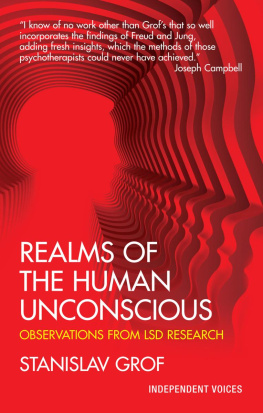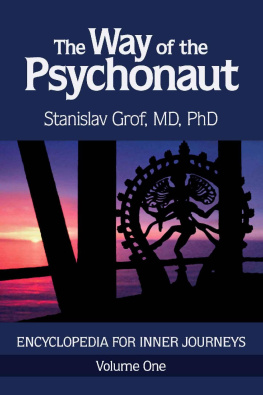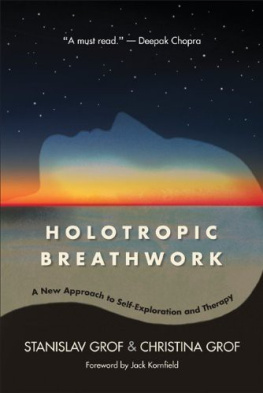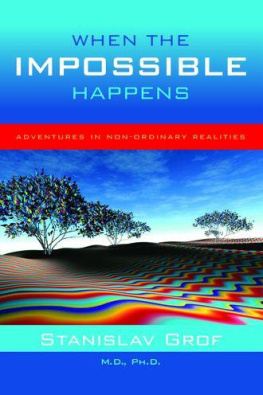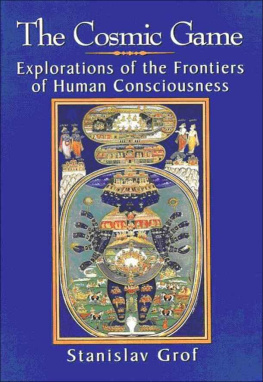This volume is the first of a series of books in which I plan to summarize and condense in a systematic and comprehensive way my observations and experiences during seventeen years of research with LSD and other psychedelic drugs. Exploration of the potential of these substances for the study of schizophrenia, for didactic purposes, for a deeper understanding of art and religion, for personality diagnostics and the therapy of emotional disorders, and for altering the experience of dying has been my major professional interest throughout these years and has consumed most of the time I have spent in psychiatric research.
In 1965, I was invited to participate in an international conference on LSD psychotherapy in Amityville, Long Island, and gave a paper on the experiences I had gathered during almost a decade of LSD research in Prague, Czechoslovakia. During a lecture-journey in the United States after this conference, I was offered an invitation to come to the West on a one-year fellowship from the Foundations Fund for Research in Psychiatry in New Haven, Connecticut. After my return to Prague, I received a letter from Dr. Joel Elkes, Chairman of the Department of Psychiatry and Behavioral Sciences at the Johns Hopkins University in Baltimore, inviting me to come to Baltimore and continue my LSD work as a clinical and research fellow at the Henry Phipps Clinic and in the Research Unit of Spring Grove State Hospital.
When this unusual opportunity occurred, I was deeply involved in my research activities in Prague. I had accumulated detailed records from many hundreds of LSD sessions and was in the process of analyzing the data, trying to formulate a theoretical framework for understanding the striking observations that I had encountered during my work. By then I had completed the first outline of a conceptual model that seemed to account for most of the findings in my LSD research; this model allowed for the creation of several partial hypotheses that could be put to a more rigorous test. In addition, I became intrigued by the possibilities that LSD psychotherapy seemed to offer for the alleviation of the emotional suffering of cancer patients facing the prospect of imminent death. On the basis of some preliminary observations, I was preparing a special project to explore this new area in a more systematic way.
Dr. Elkes generous offer was too tempting to refuse; I decided to pursue this possibility and ask the Czech authorities for a one-year leave of absence and permission to go to the United States. After many administrative difficulties, this permission was finally granted. When I arrived at Kennedy Airport in March 1967, more than half of my forty pounds of luggage consisted of the records from LSD research that I had conducted at the Psychiatric Research Institute in Prague. My intention, at that time, was to complete the analysis of my data and to perform a controlled clinical study of the efficacy of the technique of LSD psychotherapy that I had developed during many years of therapeutic experimentation. My secret hope was that, in addition, I might be able to carry out at least one of the more theoretical studies testing some aspects of my new conceptual framework.
After my arrival in the United States, it soon became obvious that my plans were highly unrealistic, to say the least. I was astounded by the situation regarding psychedelic drugs that had developed in this country since my first visit in 1965. In Czechoslovakia at the time of my departure, LSD was being legally manufactured by the leading pharmaceutical company sponsored by the government. It was listed in the official medical pharmacopoeia as a therapeutic agent with specific indications and contraindications, together with such reputable drugs as penicillin, insulin, and digitalis. LSD was freely available to qualified professionals as an experimental and therapeutic agent, and its distribution was subject to special regulations. The training required for each LSD therapist more or less followed the psychoanalytic model; it involved a minimum of five training LSD sessions for the applicant and his conducting at least thirty sessions with selected patients under the supervision of an experienced LSD therapist. The general public knew almost nothing about psychedelic drugs, since the reports concerning research with such substances were published almost exclusively in scientific journals. At the time of my departure, there was no black-market traffic in psychedelics and no nonmedical use of them. Anyone interested in self-experimentation could have an LSD session provided it was conducted by an approved professional and in a medical facility.
The situation I found in the United States contrasted sharply with the one described above. Psychedelics had become an issue of general interest. Black-market LSD seemed to be readily available in all parts of the country and for all age groups. Self-experimentation with psychedelics flourished on university campuses, and many large cities had their hippie districts with distinct drug subcultures. The casualties from the psychedelic scene were making newspaper headlines; almost every day one could read sensationalist reports about psychotic breakdowns, self-mutilations, suicides, and murders attributed to the use of LSD. At the same time, the psychedelic movement was profoundly influencing contemporary culturemusic, painting, poetry, design, interior decorating, fashion, movies, theater, and television plays.
The legislative measures undertaken with the intention of suppressing dangerous self-experimentation proved rather ineffective in curbing nonmedical use of LSD but had adverse direct and indirect consequences for scientific research. Only a handful of projects survived under these complicated circumstances. As a result, LSD research was reduced to a minimum and, paradoxically, very little new scientific information was being generated at a time when it was most needed.

